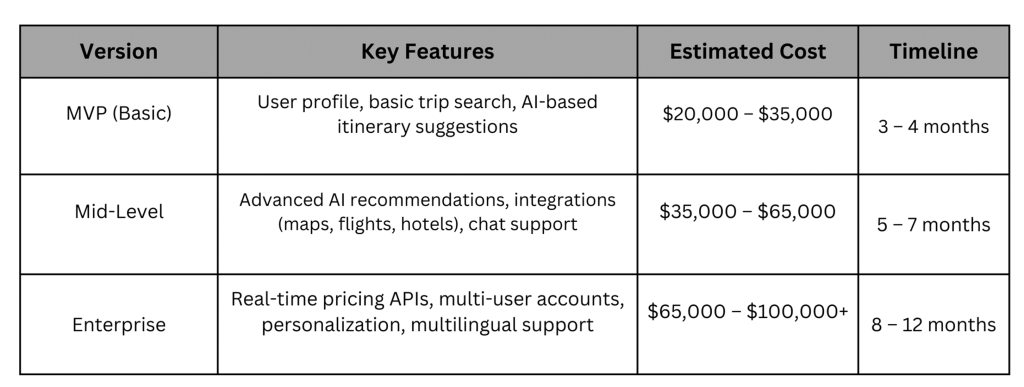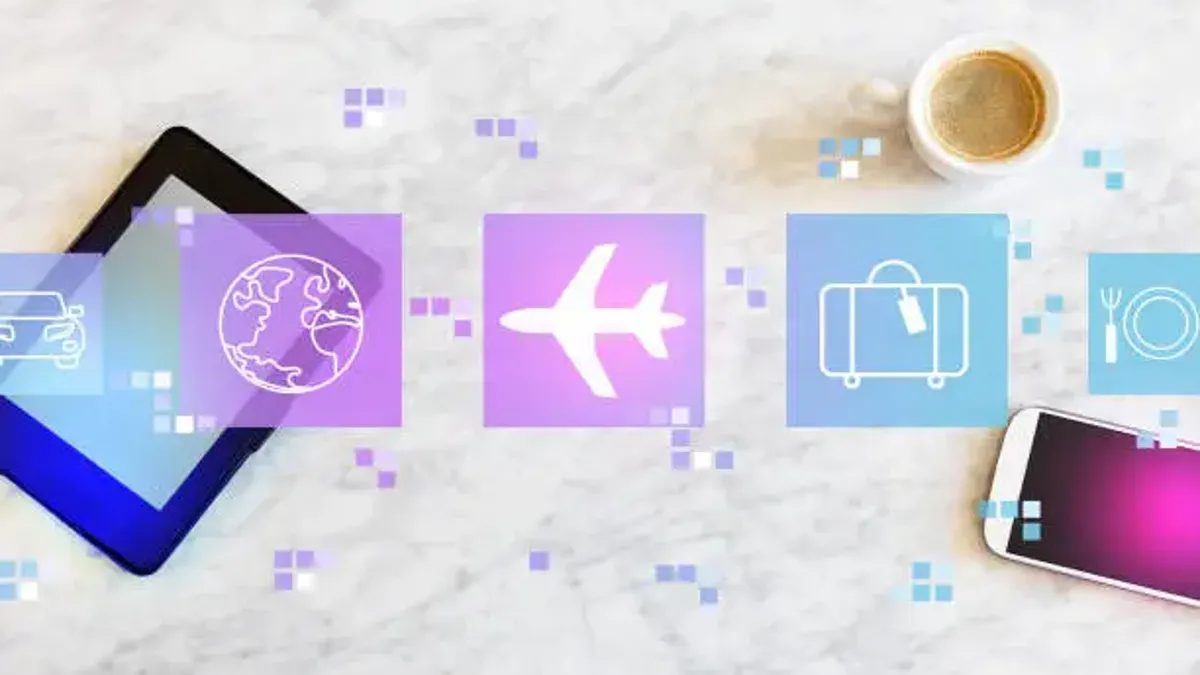The travel industry is undergoing a significant shift with AI transforming how trips are planned and booked. Instead of browsing multiple sites, travelers now expect personalized itineraries in seconds. In fact, over 70% of travelers say they prefer AI-driven recommendations when planning their trips (Statista).
This is both a challenge and an opportunity for travel agents and companies. Building an AI-powered trip planner can help deliver tailored experiences, increase customer loyalty, and drive more bookings. This guide explains the step-by-step process of creating such a platform, along with the key cost factors to consider.
Step-by-Step Tutorial to Build an AI-Powered Trip Planner
The development of an AI trip planner is not just about coding; it’s about constructing a solid, logical framework that people trust with their holiday plans. It might sound complicated to build, but with the following simple steps, you can build a customized platform that can improve the overall satisfaction and trip experience of your travellers.
1. Define the Vision and Scope
The first is to determine your trip planner app’s goals. Determine whether it will handle budget travel, luxury travel, business travel, or family travel. Being specific at this point prevents issues later.
Key Considerations:
- Determine your target market (e.g., independent tourists, business tourists).
- Select your trip planning level: local, national, or international.
- Add key features such as itinerary suggestions, reservation options, and cost savings.
2. Data Gathering and Integration
Data is essential for any AI-powered trip planner. You would need data on flight time, accommodation, transport, nearby attractions, weather, and ratings. Travel agencies, booking services, and other organizations offer APIs that help create this database.
Key Considerations:
- Use APIs from booking sites like Expedia and Skyscanner.
- Collect user data to personalize.
- Make sure to follow GDPR and data privacy rules.
3. Hire The Right Talent
To create an AI solution, you need to hire AI developers who are skilled and familiar with AI technology and problems in the travel sector. Proper team selection ensures a smooth process and produces the correct outcome.
Key Considerations:
- Hire AI programmers who are familiar with NLP and recommendation systems.
- Include UI/UX designers to create straightforward user experiences.
- Collaborate with QA engineers to test for accuracy and reliability.
4. Build AI and Machine Learning Models
AI algorithms tailor recommendations to user history, budget, and preference. Machine learning improves the application over time as it absorbs user behavior.
Key Considerations:
- Deploy natural language processing for user conversation.
- Utilize recommendation algorithms to generate itineraries.
- Forecast costs with costing models and verify availability.
5. Prioritize User Experience and Interface design
Travel planning is stressful, so simplicity and readability are key. The intention is to simplify planning while making the AI recommendations easy to act on.
Key Considerations:
- Design mobile-first for ease of use.
- Include maps, filters, and quick-view trip plans.
- Offer multi-language and multi-currency support.
6. Use of Outside Services
Your application should connect with airlines, hotels, car rentals, and payment gateways. This allows users to organize and book holidays without ever leaving the platform.
Key Considerations:
- Secure reservations using booking engines.
- Make easy payment options.
- Provide instant alerts of delays, cancellations, or availability.
7. Testing and Launching
Before going live, stringently test your AI-powered trip planner to ensure it is correct, effective, and dependable. Once you have stabilized it, release a beta version to gather user feedback.
Key Considerations:
- Check AI suggestions for accuracy
- Make it cross-platform (iOS, Android, web)
- Make changes according to what users comment
Cost to Build an AI-Powered Trip Planner
The development cost varies based on features, integrations, user base, and deployment model. Building an AI-powered trip planner may cost between $30,000 and $120,000. Annual maintenance is usually around 10–15% of the initial development cost. Many factors can affect these prices, so let’s discuss these factors first and then have a glance at the estimated development cost.
Factors That Affect Development Cost
AI Model Complexity: The more sophisticated the AI model, the higher the development cost. A basic recommendation engine is less expensive than a sophisticated one with natural language processing, predictive analytics, and real-time personalization.
Features and Capabilities: Simple functions such as trip planning and reserving hotels are less costly, but complex functions such as voice command, virtual reality walk-throughs, or modifying price estimations can significantly increase the expenditure.
Integration Requirements: The quantity and nature of integrations impact cost. APIs, reservation engines, and payment gateways complicate integration, and smooth real-time syncing between different systems costs more.
Talent and Development Team: The size of the development team has a significant bearing on the cost. AI programmers, data scientists, UI/UX designers, and QA developers all have specialized skills and are paid accordingly.
Location: The location of the teams also influences the cost. Outsourcing developers or partnering with an AI development company from less expensive countries like India is generally less costly than building an in-house team from scratch.
Estimated Cost Table:

Conclusion
The future of travel lies in intelligent systems that simplify trip planning and anticipate travelers’ needs before they even ask. An AI-powered trip planner isn’t just another digital tool; it bridges personalized experiences and operational efficiency. Businesses that embrace this innovation can position themselves ahead of the curve in an industry where convenience, trust, and real-time adaptability define success. Those who invest in AI today will set the standard for how people explore the world tomorrow.

